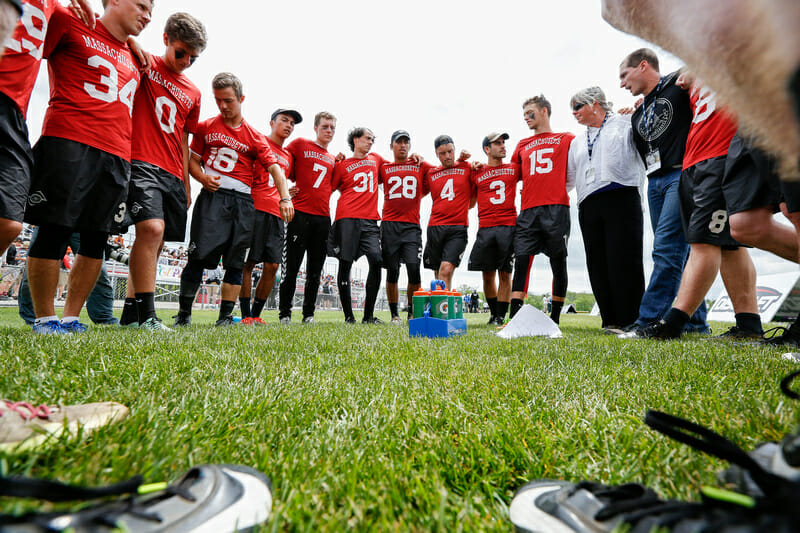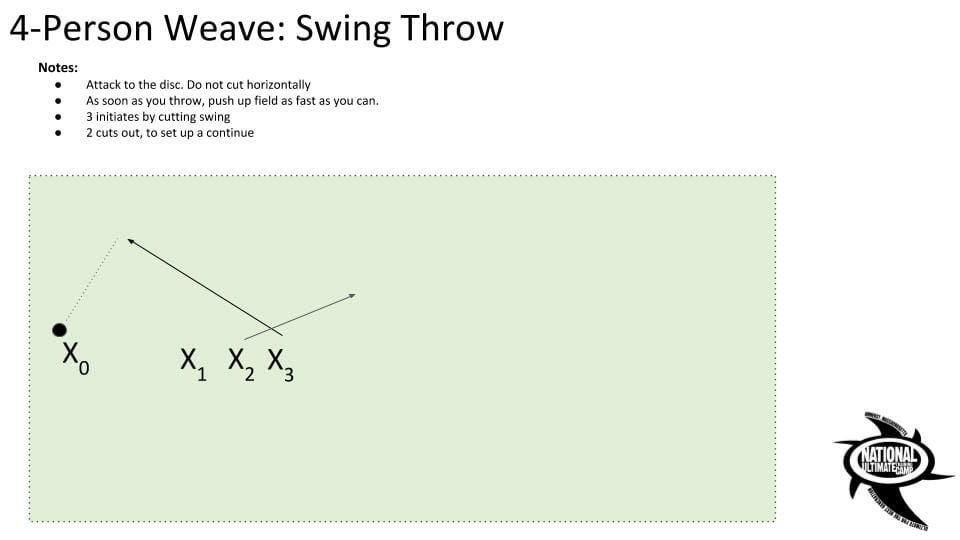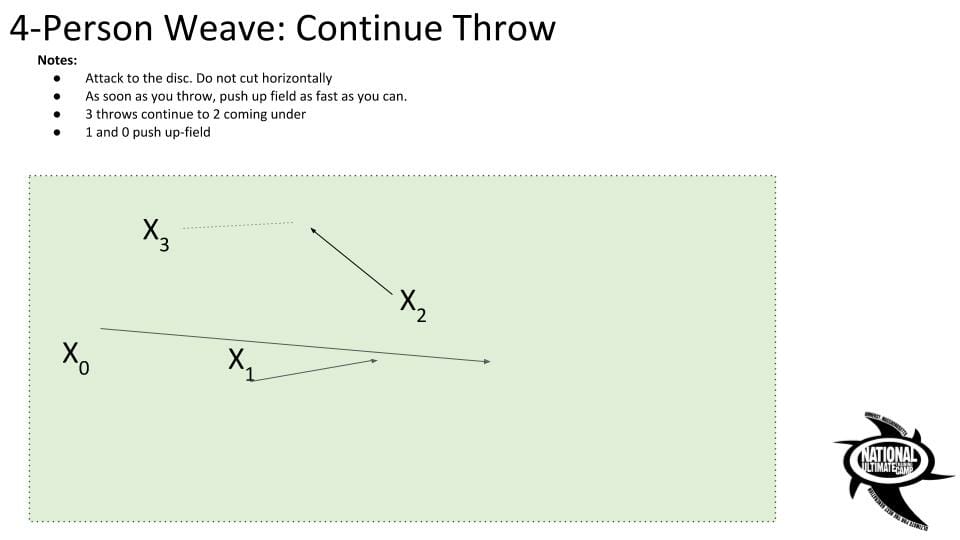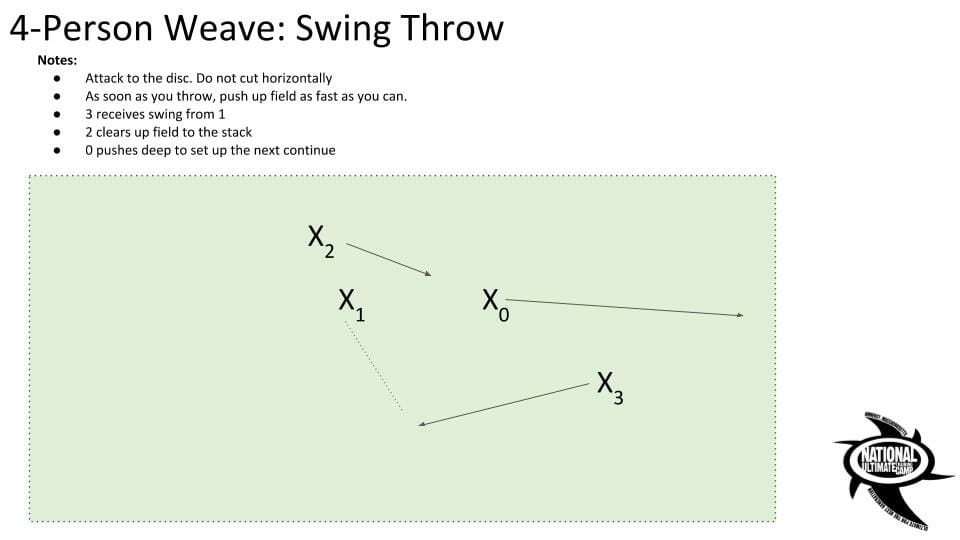March 8, 2018 by Tiina Booth and Russell Wallack in Opinion with 0 comments

This article is part of the Coaches’ Corner series from UMass coaches Tiina Booth and Russell Wallack. See every article in the series here.
This week, Tiina and Russ are opening your mail! They will be doing at least one more mailbag in the future, so if you have questions, please submit them in the comments, on Twitter, or by email.
Q: To identify and evaluate the current team culture, you recommend surveying the team anonymously. I am a little unclear on what kind of questions you would ask to find out more about the default team culture. Earlier in the article, you mention communication, practice and tournament habits, sideline energy, etc. as parts of a team culture. So if you could elaborate on how to survey and quantify these things effectively, that would be awesome.
A: Remember, we are considering culture to be the emergent result of your team’s attitudes, values, goals, and practices. So, the design of a survey of your team culture should consider how to answer questions like:
- What attitudes are players bringing to practices/tournaments?
- What values do we bring to our team? As leaders? Players? Friends?
- What are the goals that each player has for their participation on the team?
- What are the identifying practices of our team?
These questions might not show up in your survey, but they can guide your thinking. What you are trying to do is better understand how your team is agreeing to relate to each other, both explicitly and implicitly. This process will be different for every team, but a few steps that might help to expose some of your blind spots, and help you get to know your team better are:
- Make a list of practices and whether or not they align with the other aspects of your culture. If you want a culture of hard work and perseverance, but you often forfeit consolation games, then you are out of alignment.
- Interview your captains and coaches. Are you all on the same page about attitudes, values, goals, practices? Do you see the same alignments or misalignments? If you want a culture of team connection and respect but you only motivate each other through insulting comments and bullying, then your values and practices are out of alignment.
- Design a survey process. After completing the above steps, the leadership team will likely have areas where they see that the team culture can be enhanced. Does the rest of the team see this opportunity? Are they seeing the team culture in the same way?
This is where it is up to you to decide next steps. A few ways you could consider surveying your team are:
- Send out a poll that has questions relating to your observations. This method allows your team to respond anonymously with concerns.
- Have a team meeting organized to explore the identified opportunities for growth.
- Have one on one meetings with your teammates to openly discuss team culture, and then proceed from there.
There is no one way to do this. Take the time to see what your team needs.
Q: At what point in the season, if any, do you think it’s more valuable to stop working on your team’s weaknesses and focus more on fine tuning or maximizing your team’s strengths? On a team that has major gaps between the top players and rookies, what strategies can you take to ensure your most experienced players are getting opportunities to level up as well?
A: It depends on your team. I know that answer is annoying, but it does depend on the team you have in front of you. We can certainly provide some guidelines.
- This desire to only have the best players play against each other is sometimes more hype than fact. We have found that the self-segregation of “top” players is often a way to avoid doing the hard work of building a team. If you truly have top-level talent, that means they understand the importance of having everyone improve throughout the season. They may get frustrated but that will only prepare them for the ups and downs of actual competition. And if they are top-level, they will be motivated to level up outside of practice.
- On a team that has a wide range of talent, we would set aside time for new players to have successes away from practice, either with the coaches or other leaders on the team. We are not arguing that it is fun as a veteran to cut for someone who has no forehand. But if everyone on the team is dedicated to have the average skill level rise, you will have better buy-in, morale, and overall improvement.
- We would also caution against pegging someone too early that they won’t get better by the crucial last tournament of the season. If you allow yourself or your captains to tell a story about someone (“they will never get faster. they can’t catch above their head. we can’t rely on them for tough games.”), you are doing a disservice to everyone. Every veteran coach has stories about players whose improvement surprised them, as well as stories about older players who stopped improving and maybe even regressed at the end.
Q: Do you ever openly tell a team that the focus is on a long term program, and that results this year aren’t that important compared to longevity of the program? If so, has that ever caused conflicts with senior players, and how did you deal with that?
A: We did have a discussion over the winter about our overall program with the captains. We added a developmental team last year that now has 20 dedicated players who will play the USAU Div. 1 series. We are also codifying the program through our newsletter with alumni profiles and current news.
Russ may disagree with me here, but I think it is too much for current players to embrace the concept of sustaining a program when they are currently in the program. I think that responsibility lies with the coaches, alums, and perhaps the university. And I would never coach a team or play a season where we didn’t try to achieve the best results that we could.
Q: How do you effectively (and concisely) make in-game adjustments?
A: You keep it simple, and you keep it consistent with the language, skills, and systems that your team has trained. For example, let’s say you are playing another team who has a single player that is touching the disc every other throw. If your team has never practiced a box-and-one (a zone that matches up with a single player), I would not suggest trying to teach it at halftime. Instead, I would consider the advantages of different matchups, or defenses that you have practiced. Mix up those looks, and try to take away the other team’s top options.
There are some situations where you may actually have a better short-term outcome by playing a brand-new defense. It is on you to decide if that is what your team needs, or if your priority is improving at the systems and skills that you are committed to in the long-term. If your team is consistently dependent on you as a coach to come up with your brilliant ideas, than you are minimizing your players agency in their own performance and growth.
Q: Could you create a diagrammed version of the four-person weave included in Russell’s article on designing effective drills?
Sure! The pattern of this drill is swing -> continue -> dump -> swing etc. The following four images are an illustration of this pattern. We generally run the weave 90 yards from the back of an endzone into the front of the far endzone.



